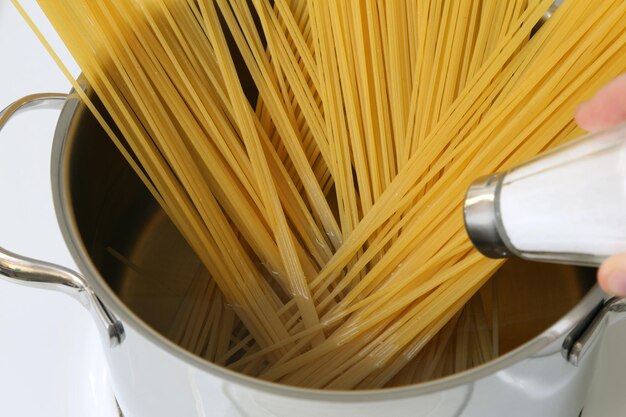How Long Can You Really Keep Spaghetti In The Fridge?
Few culinary delights compare to a well-prepared plate of spaghetti. Whether coated in a classic marinara, a rich Alfredo, or just a splash of olive oil and garlic, spaghetti is a versatile dish that easily adapts to various tastes and occasions. But what happens when you make too much, or wisely prepare a batch for future meals? How long can spaghetti remain safe and tasty in your refrigerator, and what best practices should you follow for storage? This article dives into these questions, offering actionable insights for optimal spaghetti preservation.
Understanding Spaghetti's Shelf Life in the Fridge
When it comes to storing spaghetti in the refrigerator, understanding its shelf life is crucial for both safety and quality maintenance. Cooked spaghetti has a general shelf life of 3 to 5 days in the fridge. However, the exact duration can depend on several variables such as preparation methods, storage conditions, and accompanying sauces or ingredients.
Factors Influencing Storage Duration
Preparation and Cooking: Freshly cooked spaghetti that is promptly cooled down will last longer than spaghetti left to sit at room temperature. Rapid bacteria growth at room temperature can compromise both safety and flavor.
Refrigeration Temperature: Ensure your fridge is set to 40°F (4°C) or below to slow down bacterial growth. Properly functioning refrigerators are key for food storage longevity.
Sauces and Additives: Spaghetti dishes with dairy-based sauces, seafood, or meats may have a shorter shelf life due to their perishable nature. Plain spaghetti or those with acidic tomato-based sauces often last longer.
Storage Conditions: Spaghetti should be stored in airtight containers to prevent exposure to air and moisture which can hasten spoilage. Tip: Carefully portionating into smaller containers can make reheating easier and preserve quality.
Best Practices for Storing Spaghetti
How to Store Spaghetti Efficiently
- Cool Quickly: After cooking, let the spaghetti cool quickly. Tip: Place the container in an ice bath if needed for rapid cooling.
- Use Airtight Containers: Whether using plastic, glass, or silicone containers, ensure they are completely sealed to maintain freshness and ward off unwanted odors.
- Label with Dates: Clearly label storage containers with the date of preparation to monitor its lifespan and avoid potential spoilage.
Spaghetti Without Sauce
If you have leftover plain spaghetti, you can further extend its fridge shelf life by a little:
- Oil Coating: Tossing plain spaghetti with a small amount of oil can prevent sticking and keep it from drying out.
- Separate Storage: Keep pasta separate from sauces if you plan to store for more than a couple of days, mixing them only when ready to eat can help preserve texture.
Recognizing Spoilage
It's crucial to identify signs of spoilage to avoid consumption that might lead to discomfort or foodborne illnesses.
Key Spoilage Indicators
- Off Odor: Spaghetti emitting a sour or otherwise unusual smell should be discarded.
- Visible Mold: Any signs of mold mean the spaghetti should not be eaten.
- Texture Changes: Sliminess or excessive dryness indicates potential spoilage.
A 🍽️ Quick Summary Guide
- 👨🍳 Cooked Spaghetti Fridge Lifespan: 3 to 5 days
- 📦 Storage Tip: Use airtight containers; refrigerate at 40°F (4°C).
- 🍝 With Sauce? Separate for longer freshness.
- ❌ Spoilage Signs: Off odor, mold, unappealing texture
Optimizing Leftover Spaghetti Through Recipes
Spaghetti leftovers present a superb opportunity to get creative with meals. Here are quick suggestions to refresh your dish:
Simple Recipe Ideas
- Spaghetti Frittata: Mix leftover spaghetti with eggs, cheese, and any vegetables or meats on hand, then bake until set. Great for breakfast or a light dinner.
- Spaghetti Stir-Fry: A quick fry-up with vegetables, soy sauce, and your choice of protein can rejuvenate plain pasta for a savory meal.
- Spaghetti Salad: Cold pasta tossed with vegetables, feta cheese, drizzled with balsamic vinaigrette offers a hearty salad ideal for warm days.
These approaches not only prevent waste, they can also offer nutritious and diverse meal options throughout the week with minimal effort.
Addressing Common Food Storage Myths
Can Spaghetti Be Frozen for Extended Longevity?
The answer is a resounding yes. While fridge storage is limited to days, freezing can extend the lifespan of cooked spaghetti to two months or more. Here are some key tips to effectively freeze spaghetti:
- Pre-Freeze Plain: If meal prep allows, consider freezing plain spaghetti instead of mixed with sauces to maintain texture.
- Freezing with Sauce: Tomato-based sauces generally freeze better than dairy-based sauces.
- Portion Before Freezing: Utilize portioning strategies such as silicone muffin molds to freeze spaghetti in individual servings, simplifying thaw and reheating processes.
How to Thaw and Reheat Spaghetti Safely
When reheating spaghetti, there are safe and efficient methods to maintain quality and texture:
- Thaw Gently: Move frozen spaghetti to the fridge for several hours before reheating to ensure even temperature distribution.
- Reheating Methods: Stovetop reheating with a small amount of water or stock can help prevent drying. Microwave reheating should be done with a lid or microwave-safe cover to retain moisture.
By understanding the nature of food storage and the behavior of cooked pasta, anyone can enjoy spaghetti without the fuss or fear of potential food safety issues, savoring every strand as safely and deliciously as when freshly cooked.
Spaghetti is versatile, comforting, and safe when stored properly, enhancing the dining experience, even days later. Whether enjoyed immediately or saved for later, knowing the optimal ways to store your spaghetti dishes ensures both freshness and flavor stand the test of time. Keep these tips in mind, and you'll make the most of your spaghetti, waste less, and savor every meal. 🍝
